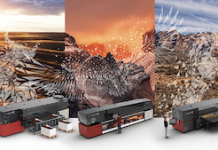According to Vaughan Patterson, head of Commercial and Industrial Print at Ricoh SA, you have to focus on adding value to customers’ businesses right now.
Nobody has money to spare in this fragmented lockdown that’s been thrust upon us, but everyone is looking for the same thing. On Maslow’s hierarchy, most businesses are in survival mode and they’re willing to spend on solutions that will keep them alive and maybe even help them thrive as lockdown eases further.
A lot of printers are going into price wars as lockdown gradually withdraws and they begin operating again. These businesses have had their machines sitting idle and their employees at home. Some are desperate to get the equipment running again to get some cash into the business. But a price war is the last thing they or anyone else needs and, if they get into one, they won’t survive.
The problem for many printers is that they’ve always focused on providing low cost per page products to their customers. That kind of business is becoming exponentially harder to find. The competition is much tougher, so you have to be able to offer more. Something as simple as sending customers an SMS when their job is complete and storing the job so they can return easily and run the same job again can create traction. It can add value because it makes the customer’s life a little easier. But it’s not going to be the endgame in these unreasonably difficult times. Not even close. People need a lot more value to justify their constrained budgets.
There’s not a person who doesn’t want more value for their business right now. Here’s an example. I was chatting in a cycling group on Zoom the other night. It was at the time when everyone was getting over the novelty of Zoom calls and they were becoming a bit invasive to people’s daily schedules. We were discussing how intrusive it can be and that it didn’t add much value beyond being able to see another person’s kids in the background. I happened to mention an alternative solution that we have and how beneficial it can be. One of the guys who was on the call sells medical equipment. He private messaged me and asked me to chat to him about a solution because, and I quote, ‘The way we do things will never be the same again and we need to explore anything that can give us a benefit.’
Everyone understands and accepts that we need to change the way do business; it’s not just the printers, it’s their customers, too. Many people have wondered during lockdown, ‘Do I need print?’ In some cases the answer is, ‘more than ever.’
Think about the way we shop. My local Pick n Pay takes orders via WhatsApp now and they message you when your goods are ready for collection. They meet you in the parking lot with a card machine. Or you can go on the website and get deliveries. That’s already changing the way we package goods and print that packaging. Goods are currently packaged to stand out on shelves. You’ll still need that under ‘the new normal’ but likely a lot less than in the past. People who buy online or via click and collect interact with products in very different ways from people who shop in store.
It requires a different level of interaction. Packaging could become more tactile, for example, or it could offer subtler messaging more resonant with people when they are already in their homes, packing goods into cupboards, fridges and freezers. Or it could be via the local newspaper. Those papers are full of flyers that could once more become an important link in the customer’s journey. You could offer them coupons in those papers to buy your products instead of a competitor’s. Or you could do that via the product packaging itself. It will most likely bump up the relevance of product packaging in new ways as well as the relevance of the local paper.
Another example of how printers can help customers differently. We’re busy with a project in Europe helping a retailer create custom point of sale (POS) material on a production device that outputs high quality materials. They have depots with trucks that leave everyday packed specifically with whatever their destination stores require. One shop may be running a loss-leader (a product sold at a loss to attract customers) on avos, for example, so when the truck with its stock leaves the depot that morning it goes carrying custom POS material advertising the fruit. In other cases their head office people may notice an overstock on bananas across the board so they’ll have a special across all stores. It’s all software and template driven. The retailers can drag and drop their personalised detail into the template, set their own prices, and populate the posters in predetermined ways.
It maintains the brand consistency, it provides the retailers with much more cost-effective ways to create the materials they need to help market goods in their stores, and it’s all run off a centralised digital asset management system that provides additional group-wide benefits.
Banks and even insurance companies use the same tools. An insurance agent can download the up-to-date contracts from a central repository, change the agent name, address, and maybe add a logo and company name, otherwise the document remains the same as head office requires.
The end result is that customers need more value because they are also under pressure to provide more in turn. Pricing is obviously an issue for everyone in a world where lockdown makes generating revenues a moving target. But value will be the key to winning customers and staying in business.
To submit your news please, contact journo@practicalpublishing.co.za
Submit your news and video content to journo@practicalpublishing.co.za
Subscribe to our YouTube channel, read the top 5 stories weekly on WhatsApp or sign up to our newsletter.
RICOH SOUTH AFRICA
(+27 11) 723 5000
info@ricoh.co.za
http://www.ricoh.co.za















